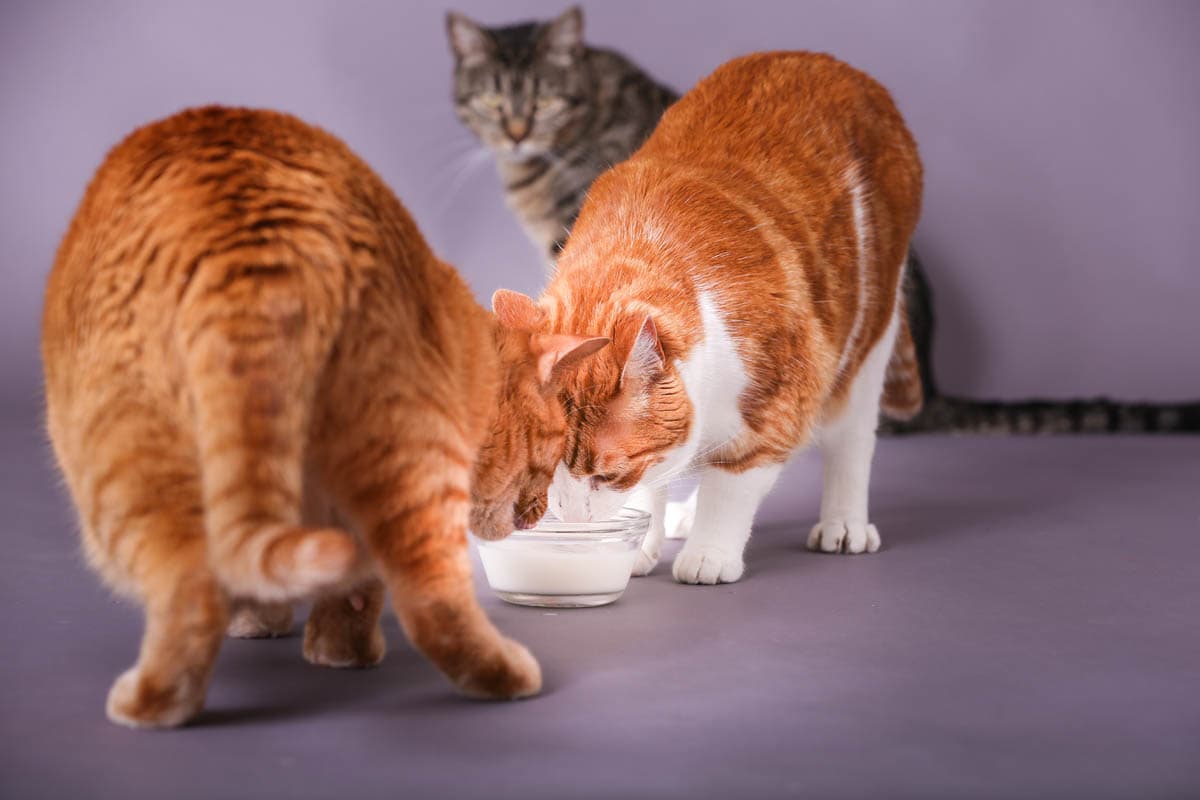Feeding cats in a multi-cat household can be a challenge for pet owners, there are many reasons why it may be necessary to feed cats separate diets.
- One cat is on a medication that is mixed into the food
- An obese cat who is on a weight-controlled diet
- To prevent one cat from eating all the food which means another cat misses out
- Cats on a prescription or therapeutic diet, for example, hyperthyroidism, urinary or kidney disease
Related: How many calories should a cat eat per day?
Ways to stop one cat from eating the other cat’s food
There are several options available to ensure cats eat separately. An important point to focus on is to ensure cats are fed at the same time every day. They thrive on routine, and this is an important factor.
Set up separate feeding stations:
The cheapest solution is to create a feeding station per cat. So, one cat eats in the bathroom, and the other cat eats in the laundry. Close both doors to prevent one cat from getting at the other cat’s food. Leave food out for 20 minutes and then remove.
Supervise feeding times:
Once again, each cat will have his or her food bowl, but in the same room. Don’t line all bowls up in a row, but place in different areas of the same room and supervise to make sure each cat eats his or her own food. This is a little more time consuming than separate feeding stations in different rooms as you can put the bowl down, close the door and come back after a set period.
Smart cat feeders:

Image: SureFeed Microchip Pet Feeder
Smart feeders allow pet owners to manage feeding times, portions, and select which cat eats when and how much.
Some smart feeders can manage the specific portions of multi-cat households; others require several units. These feeders have a lid that only opens when it recognises the cat’s individual microchip or collar ID.
Smart feeders are controlled by smartphones or computers, and some are compatible with Amazon Alexa or Google Assistant. Each has its own unique features, which may include notifications if a cat’s food consumption drops below normal, how much the cat is eating, and how frequently, dispensing meals when you are away, as well as cameras and microphones so that you can watch and talk to your pet when you are away.
Pros: You can control how much food the cat is consuming each day, ensure each cat is eating his or her food, set up feeding times, and they keep dogs out of the cat’s food.
Cons: Can be expensive, especially if you have several cats and need to buy multiple units or ID tags.

